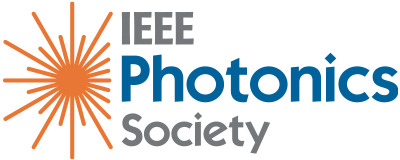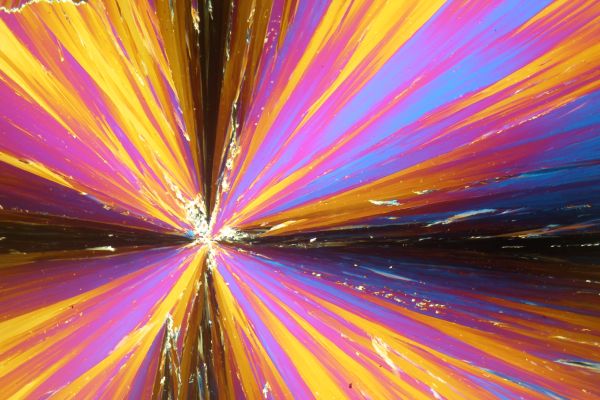Written interview conducted by Dr. Amol Delmade, Deputy Editor, IEEE PS Newsroom

The IEEE Photonics Society’s Board of Governors appointed Dr. Jian Wang, a distinguished professional with an extensive background in optics and photonics, as the Editor-in-Chief (EiC) of the IEEE Photonics Journal (PJ), for a three-year term beginning January 2024. Dr. Wang is a Professor at the Wuhan National Laboratory for Optoelectronics, Huazhong University of Science and Technology, Wuhan, China. He is an expert in optical communications, optical signal processing, optoelectronic devices, photonic integration, orbital angular momentum and structured light. The following details Prof. Jian Wang’s view on his new role and plans for the journal. The Newsroom team extends its best wishes to him on this exciting journey!
What inspired you to take the position of Editor-in-Chief of IEEE Photonics Journal?
I serve as the Editor-in-Chief of the IEEE Photonics Journal (PJ), mainly due to my immense interest and passion for the field of Optics and Photonics. I have always been active in serving the optics and photonics community, especially with the IEEE Photonics Society, OPTICA, SPIE, and the Chinese Optical Society through volunteering and editorial roles. Currently, I am the Vice Chair of the IEEE Photonics Society Wuhan Chapter. I served as an organizer, chair and committee member of many IEEE-sponsored international conferences. For academic journals, I have often come up with ideas and visions about how to promote journal development. The PJ Editor-in-Chief position will give me an opportunity to put some of these ideas into practice. In recent years, the world has especially witnessed the rapid development of optics in China. As a Chinese national, it is my great honor and responsibility to serve as Editor-in-Chief of such an important international optics journal. In a word, what inspired me to take the position of PJ Editor-in-Chief comes from my interest, passion, responsibility, and dedication to the field.
What is the scope of research published in the Photonics Journal? And what are your plans to include new topics beyond the traditional ones?
The IEEE Photonics Journal is an online-only journal dedicated to the rapid disclosure of top-quality peer-reviewed research at the forefront of all areas of photonics. Contributions addressing issues ranging from fundamental understanding to emerging technologies and applications are within the scope of the journal. PJ covers twelve main technical areas: 1) optical communications; 2) fiber optics devices and subsystems; 3) light sources; 4) detection, sensing, and energy; 5) integrated systems, circuits and devices: design, fabrication and materials; 6) plasmonics and metamaterials; 7) biophotonics and medical optics; 8) computational photonics; 9) propagation, imaging, and spectroscopy; 10) quantum photonics; 11) nonlinear photonics and novel optical phenomena; 12) optical data science and machine intelligence in photonics. In addition, new optics-related topics, such as new thin-film optoelectronic materials, new low-dimensional optoelectronic materials, twisted materials, laser micro/nano-manufacturing, optoelectronic heterogeneous integration, large-scale photonic integrated circuits, reconfigurable/programmable/intelligent optoelectronic devices and integration, light field manipulation, structured light, and topological photonics, will also be covered by PJ. Moreover, as AI is deeply penetrating various fields of optics and photonics, an increasing number of AI-enabled optics and photonics topics will be covered by the journal as well.
How do you plan to maintain the rigor and relevance of IEEE Photonics Journal in the rapidly advancing field of photonics?
Our vision for the PJ is to disseminate research and become a frequent choice for researchers to publish their breakthrough works in the field of optics and photonics. This is a challenging task, as nowadays there is an increasing number of new journals coming forward in the field, and authors have more choices. To enhance the journal’s competitiveness and maintain its rigor and relevance, we will continue to optimize the entire process from submission to publication, including an intensified editorial and rigorous peer review process, paying particular attention to the innovation and technical advances of published papers. On the one hand, we will strengthen the selection of high-quality papers from regular submissions; on the other hand, we will actively invite world-leading experts in the wide field of optics and photonics to contribute high-quality papers. Our editorial team is currently promoting the organization of a number of special issues (collections of regular and invited papers focusing on topics of special interest in different technical areas), roadmap issues (development roadmap of science and technology in hot research topics and cutting-edge research directions), and breakthrough issues (short reviews describing significant accomplishments in selected areas within the last year). In addition, we will also optimize the review process to shorten the time to publication. In other words, we are rededicating our efforts to the goal of timely publication of high-quality papers – to enhance the already-established reputation of the journal.
In what ways the photonics journal is working to support early publishers to develop their manuscripts and navigate the publication/review process? Especially from underrepresented countries with low publication counts.
PJ is a 100% open-access journal, covering breakthroughs in a very broad research field of optics and photonics. All content is freely available without charge to users or their institutions. We try our best to support young and new publishing authors in developing their manuscripts and navigating the publication and review process by providing a friendly manuscript template, a simple and easy submission experience, timely submission to publication, and diverse feedback from reviewers and editors about the manuscript. We have a very professional and responsible editorial and publishing team, with the aim of better serving authors and readers of the journal. We will actively increase journal promotion in underrepresented countries with low publication counts, which can be achieved through international conferences, IEEE Photonics Society chapters, and other diverse forums. We will also promote PJ on social media outlets such as Twitter, WeChat, LinkedIn, and other instant messengers. We aim to inform more and more people about PJ (via news, calls-for-papers, awards, new online paper alerts, etc.) in a more convenient way, not just from the website. We are considering a Publicity Editor position, seeking an enthusiastic volunteer leader to bolster our engagement with the optics and photonics community, and increase the visibility of the journal on social media and other channels, especially in underrepresented countries.
What steps would you like to take to encourage the photonics industry experts to publish in the Photonics Journal and bridge the gap with academia?
The photonics industry has developed rapidly in recent years. The photonics industry not only has the latest photonics products but also many cutting-edge technologies, especially those serving major application needs. PJ will definitely strengthen its ties with industry to promote mutual development. We do have some plans to encourage the experts in the photonics industry to publish in the journal to bridge the gap with academia.
First, we will increase the proportion of editors from the industry in our editorial team. We have recommended some experts from world-leading photonics companies as candidates for Associate Editors. We believe they will play an important role in linking the journal to the photonics industry.
Second, we will enhance the collaboration between the journal and photonics international conferences, symposiums, and workshops – especially during IEEE-sponsored conferences and photonics industry sessions. We will encourage more regular submissions and invited papers from photonics industry experts, reporting on the latest technical advances and developments in the photonics industry.
Third, we will also actively invite photonics industry experts to organize the aforementioned special issues, roadmap issues, and breakthrough issues. We may also consider inviting both academia and industry experts to share their perspectives on how to bridge the gap between academia and industry, which will be of great significance. We believe the close interaction between academia and industry will better promote the healthy and sustainable development of optics and photonics. We hope to elevate our IEEE Photonics Journal to make some positive and lasting contributions to the industry and field!




